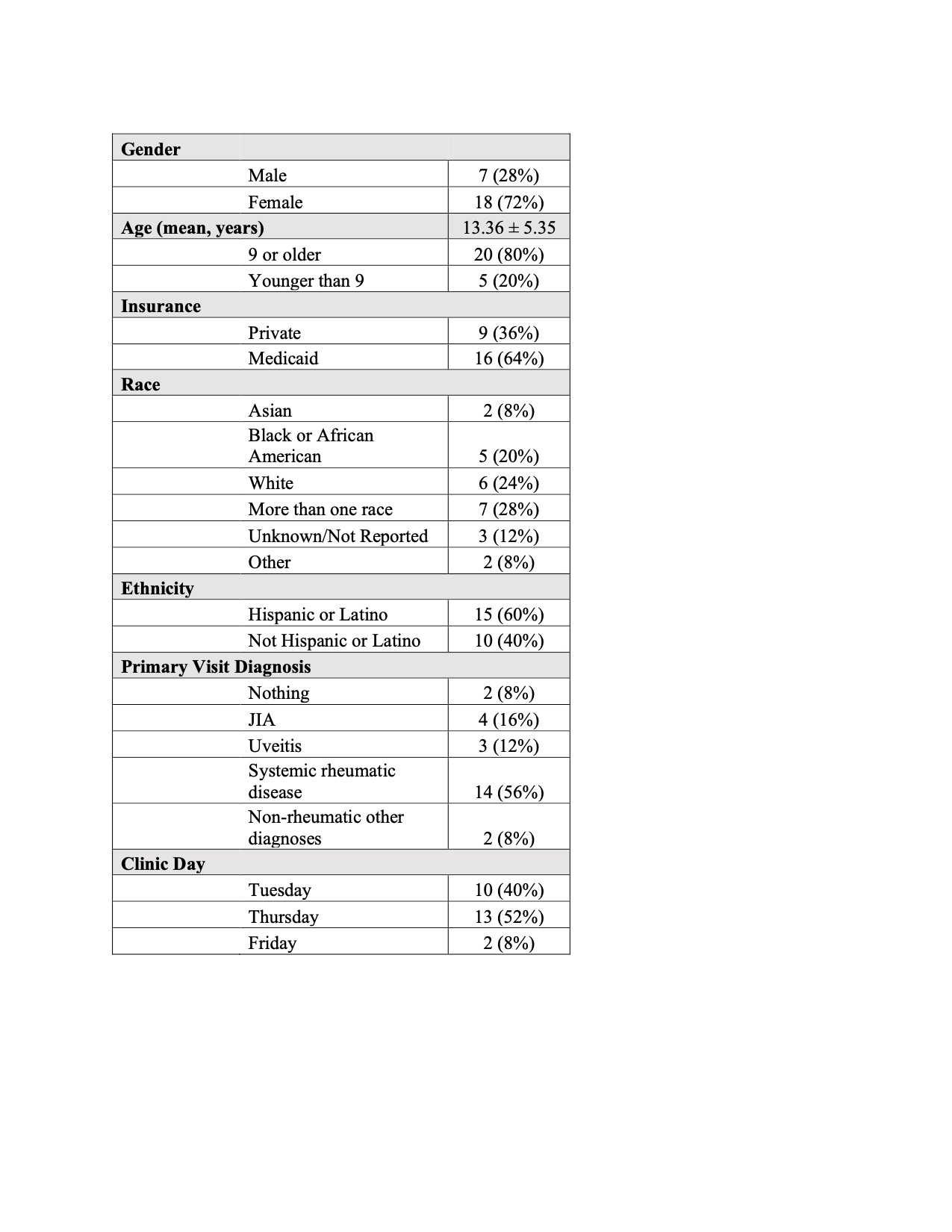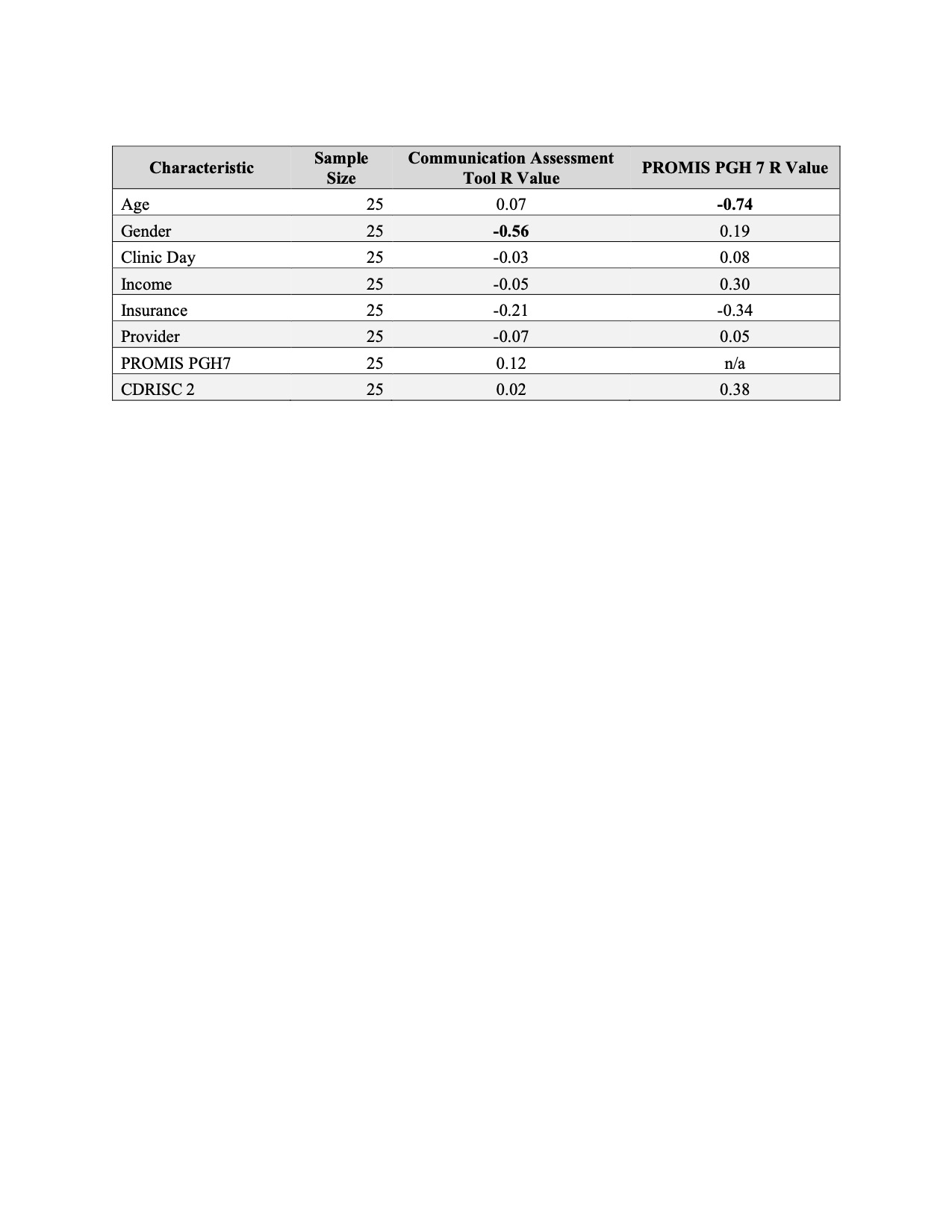Allergy, Immunology and Rheumatology
Allergy, Immunology, and Rheumatology
379 - Communication Quality in Pediatric Rheumatology
Sunday, April 30, 2023
3:30 PM - 6:00 PM ET
Poster Number: 379
Publication Number: 379.301
Publication Number: 379.301
Julie Samuels, Icahn School of Medicine at Mount Sinai, NEW YORK, NY, United States; Emma Wojtal, Icahn School of Medicine at Mount Sinai, New York, NY, United States; Rebecca Trachtman, Icahn School of Medicine at Mount Sinai, New York, NY, United States

Julie Samuels (she/her/hers)
Clinical Research Coordinator
Icahn School of Medicine at Mount Sinai
NEW YORK, New York, United States
Presenting Author(s)
Background: Communication is an essential part of medical care, especially in Pediatric Rheumatology where children have varying complex chronic diseases. However, there is paucity of data about effective patient-provider communication. Studies have shown that improvements are required in information accessibility and ensuring children feel safely engaged in healthcare conversations. Further evidence suggests that good communication leads to improved adherence and outcomes, as well as treatment satisfaction in children with juvenile arthritis.
Objective: To evaluate communication quality in Pediatric Rheumatology clinical practice using the Communication Assessment Tool (CAT) and assess correlations between the CAT and patient-specific factors.
Design/Methods: We consecutively recruited 25 patients with follow-up appointments between 10/27/22 and 11/17/22. Parent proxies completed surveys for children younger than 9 years. Participants completed a demographic survey, CAT, Patient-Reported Outcomes Measurement Information System Pediatric Global Health Measure 7 (PROMIS), and Connor Davidson Resilience Scale 2 (CD-RISC). Raw PROMIS scores were converted to T-scores using standard software. Spearman’s correlations were performed with statistical significance set to p< 0.05.
Results: Table 1 shows demographic data. The mean CAT score was 4.76 and median was 5, indicating overall high satisfaction with communication quality. Average PROMIS was 47.3±8.04 and CD-RISC was 6.04±1.24, both consistent with reported means for the general population. CAT was only correlated with gender (r=-0.56, p=0.004), with males endorsing lower scores; while age was strongly negatively correlated with PROMIS (r=-0.74, p=0.00002), with older children endorsing worse quality of life (QOL) (Table 2).
Conclusion(s): The mean CAT score of 4.76 indicates overall high communication quality in our department; however, the percentage of excellent scores was 24.3% lower than the initial report, indicating that areas for improvement exist. There were no significant correlations between CAT and PROMIS nor CD-RISC, suggesting that communication quality is not associated with QOL or resilience. Male patients endorsed worse communication quality; given that the majority of our providers are female, additional research is needed to determine the drivers for lower scores in males. Older patients reported worse QOL and reasons for this are unclear. This study is limited by a small sample size in a single center. Additional research is needed to further assess the drivers of high and low communication quality and improve communication in this population.


